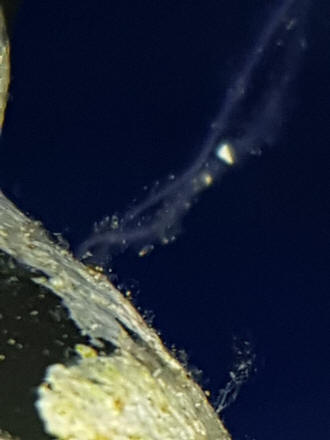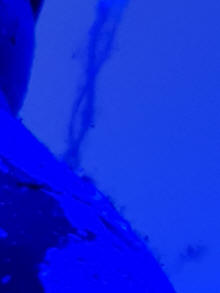|
FAQs about Non-Vertebrate Animal Identification
65
Related Articles: Marine Invertebrates, Marine Invertebrate Systems, Marine Invertebrate Compatibility,
Marine Invertebrate Disease,
Marine Invertebrate
Reproduction, Quarantine of Corals and
Invertebrates, Feeding
Reef Invertebrates, Lighting
Marine Invertebrates,
Water
Flow, How Much is Enough,
Related FAQs: Non-Vert IDs 1, Non-Vert IDs 2, Non-Vert IDs 3, Non-Vert IDs 4, Non-Vert IDs 5, Non-Vert IDs 6, Non-Vert IDs 7, Non-Vert IDs 8, Non-Vert IDs 9, Non-Vert IDs 10, Non-Vert IDs 11, Non-Vert IDs 12, Non-Vert IDs 13, Non-Vert IDs 14, Non-Vert IDs 15, Non-Vert IDs 16, Non-Vert IDs 17, Non-Vert IDs 18, Non-Vert. ID 19, Non-Vert. ID 20, Non-Vert. ID 21, Non-Vert. ID 22, Non-Vert. ID 23, Non-Vert. ID 25, Non-Vert ID 26, Non-Vert ID 27, Non-Vert ID 28, Non-Vert ID 29, Non-Vert ID 30, Non-Vert ID 31, Non-Vert ID 32, Non-Vert 33, Non-Vert ID 34 Non-Vert ID 35, Non-Vert ID 36, Non-Vert ID 37, Non-Vert ID 38, Non-Vert ID 39, Non-Vert ID 40, Non-Vert ID 41, Non-Vert ID 42, Non-Vert ID 43, Non-Vert ID 44, Non-Vert ID 45, Non-Vert ID 46, Non-Vert ID 47, Non-Vert ID 48, Non-Vert ID 49, Non-Vert ID 50, Non-Vert ID 51, Non-Vert ID 52, Non-Vert ID 53, Non-Vert ID 54, Non-Vert ID 55,
Non-Vert ID 56, Non-Vert ID
57, Non-Vert ID 58,
Non-Vert ID 59,
Non-Vert ID 60,
Non-Vert ID 61,
Non-Vert ID 62, Non-Vert ID 63,
Non-Vert ID 64,
Non-Vert ID 65,
Non-Vert ID 66,
Non-Vert ID 67,
Non-Vert ID 68, Non-Vert ID 69,
& Marine Invertebrates,
Marine Invert.s 2,
Marine Invert.s 3, & FAQs about:
Marine Invertebrate Behavior,
Marine Invertebrate
Compatibility, Marine
Invertebrate Selection, Marine
Invertebrate Systems, Feeding
Reef Invertebrates, Marine
Invertebrate Disease, Marine
Invertebrate Reproduction, &
& LR
Life Identification, LR Hitchhiker ID
1, Anemone Identification,
Aiptasia
Identification, Aiptasia ID 2,
Worm Identification, Tubeworm ID, Polychaete Identification, Snail Identification, Marine Crab
Identification, Marine Invert.s 1,
Marine Invert.s 2, Marine Plankton,
|

|
|
Re: Help with jelly infestation on Coral system
1/9/18
Hello again,
Sorry for the size of the pictures before.
They sent me these 4 pictures attached.
This is the best I can get with the cameras I have.
But we will try to take a sample to a lab Microscope and get pictures.
<Good; these images are not much better; but another thought came to me re
control. Do you measure RedOx? Likely increasing such (via ozone use, perhaps
UV... at worst peroxide) to about 400 microsiemens/cm. will improve water
quality, decrease the food et al. available to whatever this is. This is what I
would do, and via O3 use. B>
Thank you again.
Raúl Labastida
|
  |
|
Critter ID 10/25/27
Hi there, I've got a funny little dude on one of my corals. I've asked every
reefing group I can find and no one has an idea. It started off between these
two heads of hammer coral and looked like a Chiton at first--it's a series of
armored plates. Then it sort of curved as you can see here in the photo and it's
growing fast. There are three of them now.
It is very, very hard--harder than the coral stalk and absolutely nothing budges
it, even trying to slide a razor blade under the edge hasn't been successful.
The picture below shows it just opened its 'mouth' end which is usually shut
tight. Any ideas what it could be? I'd hate to kill it if it's a reef safe
critter. Thank you!!!
<Mmm; can't quite make out in your pix, but would have guessed at first glance
that these were Chitons as you mention, and with the clue that they can't be
removed with a razor blade either limpets of some sort or, my final guess (for
now) that these are a species of calcareous tube-building worm. I would leave
them here.
Thank you for sharing. Bob Fenner>
|

 |
|
Snails? 8/23/17
Hi,
<Howsit Ryan?>
My local aquarium shop suggested that I submit a question about some critters in
my tank. The attached images show these "sand-sized" organisms (about 1mm in
diameter) blooming in my tank.
<Neato! These are Foraminiferans! Sign of a healthy system, lack of predators>
They have been there for months and seem benign, or maybe even helpful (eating
algae?), though they do obstruct the view of the tank some. There are thousands
of them in the sand bed, on the rocks, and on the glass.
They move very slowly...as indicated by some time-lapse video. The close-up
photos were taken with a macro lens.
Can you provide any insight? Are they helpful? Harmful? Should I be concerned?
<No concern; are helpful... Enjoy them while you can, as changes in your system
will result in their crashing population wise... other life becoming more
dominant in time>
Thanks!
Ryan
<Thank you for sharing. There's a bunch on the Net (even WWM) re:
https://en.wikipedia.org/wiki/Foraminifera
Bob Fenner>
|
  |
|
Re: Snails? 8/23/17
Excellent. Thanks for the info Bob!
<Welcome Ryan. BobF>
|
|
|

